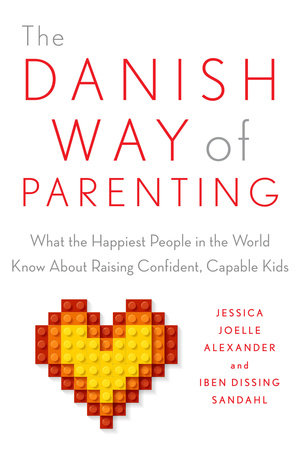Reading as the Danes Do:
Why Denmark’s Tragic Tales Are Valuable for Kids
by Iben Sandahl
Similar to other cultures, we Danes use prose as a way to connect with our children and raise strong, healthy kids — but Danish fairy tales, children’s literature, and poetry are unique in that they rarely shy away from dark themes and tragic endings.
In Denmark, it’s okay to read and talk about difficult issues with children; it’s actually expected. Danes believe that we learn more about our own character from suffering than we do from success. Stories about hardship, struggle, and conflict enhance social-emotional skills because they communicate truths about the human experience and help children identify with the feelings of others. When children read these stories, they begin to recognize the whole range of experiences that make up life — and this is the crux of empathy, the ability to walk a mile in someone else’s shoes.
Danes often rank as the happiest people on Earth, and it’s a happiness that’s based in realistic expectations. We know that scars are a part of life. We can’t avoid getting hurt, but we can give our children the tools to handle real-life experiences in a healthy way and recognize that these downturns won’t topple them.
As a therapist and family counselor, I believe that reading together is one of the greatest gifts a parent can give a child. Reading realistic, sometimes sad, tales can help kids feel gratitude for the simple things we take for granted when we focus too much on the fairy-tale version of how life “should” be. By broadening the stories you share with your children, you open up new worlds, introduce empathy, and deepen your child’s understanding of themselves. So if you’re looking to read as the Danes do, check out these famous Danish children’s tales:
Samlede Eventyr og Historier (The Complete Fairy Tales and Stories) by Hans Christian Andersen
Perhaps the best examples of traditional stories that sidestep happy endings are by world-famous Danish author Hans Christian Andersen, who is best known for his fantastical tales. His classic stories bring difficult, and even painful, topics into family homes around the world with a light touch and a memorable cast of characters. Contrary to their Hollywood adaptations, many of Andersen’s stories are tragedies. In “The Little Matchgirl,” a poor girl faces great challenges all by herself at Christmas. If you’re moved by stories that are sad and beautiful at the same time, this is the one to read. In “The Little Mermaid,” arguably Andersen’s most famous tale, the young mermaid doesn’t get the prince but turns into seafoam from sadness. It is a far cry from what Disney has made it into, but authentic and very touching.
Halfdans ABC (Halfdan’s ABCs) by Halfdan Rasmussen
This classic and beloved ABC book is both entertaining and instructive. Each letter is made into a fun and crazy rhyme, backed by superb illustrations that children love. In a playful and humorous way, it makes learning the alphabet easy and fun.
Busters Verden (Buster’s World) by Bjarne Reuter
For Buster, a good-natured and courageous little fellow, school is a challenge. He gets bullied. He falls in love with a beautiful girl, whom he tries to impress. He protects his little sister, who is smaller than him. Through it all, he maintains his optimism and uses the incredible magic skills he’s learned as the son of an unemployed magician to overcome his challenging everyday situations in a lovely, playful way. A fun and loving story.
Familien Kromme (The Crumbs) by Thøger Birkeland
The Krummerne series is about a boy who comes from an imperfect and chaotic family. Despite the fact that nothing proceeds smoothly for the hectic and eccentric unit, there is much love and hygge (cosiness) amongst them all. Funny and relatable, Birkeland’s tales show the vulnerability and honesty in life, illustrating some of the Danish core values I’m proud of.
Gummi-Tarzan (Rubber Tarzan) by Ole Lund Kirkegaard
Ivan Olsen is short and thin and, sadly, gets beaten up a lot. His father tries to help him become a real man — or rather, a real Tarzan! It doesn’t seem to be helping much, until one day everything changes for Ivan Olsen.
Mimbo Jimbo by Jakob Martin Strid
A small blue elephant, named Mimbo Jimbo, is surprised that it is snowing, even though spring should have already arrived. Together with his friends, he examines why the weather is behaving so mysteriously. It is an exciting journey into the snowy landscape, where they stumble across curious characters like a witch with a magic bell, a house on legs, and a small man with a very long black beard.
Mis Med de Blå Øjne (The Blue-Eyed Pussy) by Egon Mathiesen
Mis is a different kind of cat, with blue eyes and curly hair. This classic Danish children’s book is about cats, mice, and feeling different in a world where being different isn’t easy.
Elefantungen Carl (An Elephant Named Carl) by Ida Jessen and Hanne Bartholin
Carl is an elephant, but he’s a lot like most children. He loves to be with his family and friends. He sometimes gets angry at his parents and siblings. Carl is discovering his emotions, figuring out what it means to be sad, happy, and glad. Your children will relate to the everyday issues this sweet baby elephant experiences.
English translations are not yet available for some of these stories, but many of the Danish editions have wonderful illustrations to peruse and are available in other languages (there is a Spanish edition of Carl and it’s called Carlos!).

